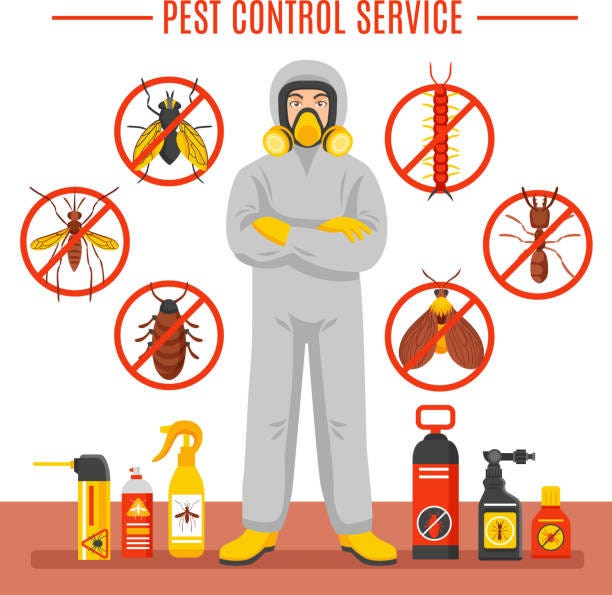Bed Insect Therapy Break Down: Contrasting Chemical Vs. Non-Chemical Solutions
In the realm of parasite control, especially when managing the consistent problem of bed pests, the selection between chemical and non-chemical treatment services can be an essential one. Both methods provide distinct benefits and disadvantages, affecting aspects such as effectiveness, safety and security considerations, and total price. By taking a look at the nuanced details of each approach, a clearer understanding of which course to go after in dealing with a bed insect infestation can be attained.
Effectiveness of Chemical Therapies
Chemical treatments for bed pest problems have actually been commonly acknowledged for their fast and powerful effectiveness in eliminating these insects. When taking into consideration the effectiveness of chemical treatments, it is important to understand that they can provide a quick and complete service to a bed bug trouble.
Moreover, chemical treatments have the benefit of using recurring impacts, implying that they can proceed to eliminate bed insects even after the preliminary application. This residual activity is specifically useful in combating any type of potential re-infestations. Furthermore, the rapid action of chemical treatments can bring relief to individuals dealing with extreme bed insect infestations, enabling them to restore control of their space quickly.
Safety And Security Worry About Chemical Solutions
One important facet that calls for careful consideration when using chemical remedies for bed bug treatment is guaranteeing the safety of residents and the setting. Exposure to certain chemicals made use of in bed bug treatments can lead to respiratory issues, skin irritation, or various other damaging responses, specifically in people with pre-existing problems or sensitivities.
Moreover, the environmental impact of chemical solutions is another considerable factor to consider. Some chemicals utilized in bed insect treatments may be dangerous to advantageous insects, wildlife, and ecosystems if they seep into the dirt or water supply. It is important to make use of chemical treatments sensibly, adhering to safety and security standards, and thinking about less toxic options to reduce these risks and make certain the secure and efficient monitoring of bed insect infestations.
Advantages of Non-Chemical Techniques
Taking into consideration the potential security issues and ecological influence connected with chemical remedies for bed insect treatment, checking out non-chemical methods presents an encouraging option with several distinctive benefits. Non-chemical approaches supply a much safer option for houses, specifically those with pet dogs, children, or people sensitive to extreme chemicals. These methods remove the threats of direct exposure to harmful materials, reducing the capacity for unfavorable health results. Furthermore, non-chemical therapies are eco-friendly, as they do not contribute to air or water air pollution, making them a sustainable option for pest control.
Additionally, non-chemical solutions can be efficient in targeting bed pests, including hard-to-reach areas where chemical treatments might not penetrate. Approaches such as heat treatment, vacuuming, steam cleaning, and bed mattress coverings provide extensive elimination without the use of dangerous chemicals. Furthermore, non-chemical strategies can be much less turbulent, calling for marginal additional resources prep work and permitting quicker reentry right into dealt with locations. Overall, choosing non-chemical bed insect treatment approaches not only prioritizes safety and environmental management but also guarantees efficient and extensive pest control.
Limitations of Non-Chemical Treatments

Additionally, non-chemical therapies typically call for multiple pest control process applications to accomplish successful elimination. This can be taxing and may not constantly guarantee total removal of all bed bugs and their eggs, especially in hard-to-reach or surprise places.
Furthermore, the success of non-chemical treatments heavily counts on correct implementation and thoroughness, which can be testing for people without specialist knowledge. Insufficient application of non-chemical approaches might cause incomplete removal, resulting in consistent invasions and the demand for extra treatments.
As a result, while non-chemical therapies have their benefits, it is crucial to recognize these limitations and consider them when identifying the most efficient method for handling bed bug problems.
Expense Contrast: Chemical Vs. Non-Chemical Options
Provided the limitations connected with non-chemical therapies, a necessary aspect to review in the context of bed insect management is the price comparison in between chemical and non-chemical options. In contrast, non-chemical treatments like heat treatment or vapor can be much more pricey, with costs varying from $1,000 to $6,000 for an entire home. While the initial expense of chemical therapies may appear reduced, multiple therapies might be required to completely eradicate the invasion, potentially boosting the overall expense.
Verdict

Thinking about the potential safety and security problems and environmental impact connected with chemical options for bed bug treatment, discovering non-chemical approaches offers a promising choice with a number of distinct advantages.Provided the limitations linked with non-chemical treatments, a vital aspect to review in the context of bed insect management is the price comparison between chemical and non-chemical choices. In contrast, non-chemical therapies like heat therapy or steam can be much more expensive, with prices ranging from $1,000 to $6,000 for a whole home. While the initial price of chemical treatments might appear lower, numerous treatments might be required to completely eradicate the problem, potentially raising the overall price.In conclusion, when contrasting chemical and non-chemical bed insect therapy choices, it is essential to think about efficiency, security, benefits, limitations, and expense.